

How Much Does Solar Power Cost in Sydney in 2025?
With electricity prices continuing to skyrocket across Australia, households are rushing to install solar power to reduce their power bills, especially now that solar panel prices in Sydney are at an all-time record low. So how much do solar panels cost to install? It depends on the system.
Key Takeaways:
Affordable Solar Systems with Quick ROI: Solar panels are now more accessible than ever, with a fully installed 6.6kW system starting from around $7,920. This size system can save homeowners over $2,500 per year on electricity bills, delivering a typical return on investment (ROI) within 3 to 5 years.
Cost Breakdown of Solar Systems: The price of a solar system depends on its size, components, and overall quality. For example, the price of a 5kW system, generating around 25 kWh per day in summer, starts from $6,000. Meanwhile, a 10kW system starts at approximately $12,000. Choosing premium products like Enphase microinverters or Trina Solar panels can improve performance and system lifespan—though they come at a higher upfront cost, they often deliver better long-term value.
Additional Costs to Consider: In addition to the base cost of a solar system, there may be extra expenses depending on your property and installation needs. For example, upgrading your meter board to meet current Australian standards can cost up to $2,000. If your roof requires a split array configuration—where panels are installed across multiple sections for optimal energy capture—this may add around $500. For multi-storey homes or steep rooftops, hiring special equipment could also incur additional charges.
Benefits of Solar Battery Storage: Adding a solar battery can maximise your energy independence. A 13.5kWh battery starts from $20,250, depending on the brand and features. Batteries let you store excess solar energy for use at night or during blackouts—making your home more self-sufficient and reducing reliance on the grid.
Other Helpful Articles:
Solar power is an innovative and efficient way of generating and managing your own clean electricity. There are a number of reasons more and more Australian households are turning to solar and other renewables to power their homes, these reasons range from a desire for greater energy independence and self management to avoiding rising costs and price instability from our energy network providers. Almost everyone can benefit from installing solar, especially in a sunny country like Australia. But this isn’t a reality for everyone. Solar is a considerable investment, often with high initial costs for a quality system leaving many hesitant to take the leap. Today we’ll unpack what goes into the price of a solar power installation, other hidden costs, methods of payment such as solar financing, projected ROI and other important things to look out for in the solar market.
Solar Installation Cost in Sydney
Solar panels are at a record low, with a 6.6kW solar system cost starting from around $7,920 fully installed. A system of this size will generate around 25 kWh a day. If we assume you are paying 30c per kWh, you can expect to save over $2500 every year if you use around 70% of the solar power as it is generated.
Good quality solar panels are now so affordable that it is possible to get a return on your money in 3-5 years. Let's break these numbers down into more detail to help you figure out how much a solar system costs and how much it can save you on your power costs. Here are the current solar system prices for good quality solar panels for customers in Sydney:

Solar Power vs. The Grid
It’s no secret solar power is significantly cheaper than grid power, this is largely due to generous government incentives and rebates aimed at offsetting the initial cost as well as accelerating the payback period after installation. For this reason (and many more) installing solar has become a no brainer for many Australian households.
How to Work Out the Cost of Solar Comparatively to the Grid:
First you’ll need to determine the projected output of your solar system over the course of its lifetime as well as the initial, upfront payment required and any ongoing costs associated with the system. Using this you can work out the generalised cost of the system or even work out the cost per kW of your solar and comp;are this against the current cost per kW you pay for grid power.


The Output of a Solar System
Let’s take a look at the daily output of a solar system; the Clean Energy Council (CEC) guidelines state that a solar system in Sydney generates 3.9kWh per day per kW of system size.
For example a 10kW solar system would generate 39kWh per day (this is averaged across the year with higher production in Summer and less in Winter).
This should hopefully give you a better idea of what to expect, although this figure is often regarded as being a little too conservative.
The Price of Solar Power Using Quality Panels
The main factor determining the price of solar panels is the amount of power you want to generate.
Solar panels output around 450W per panel, and as a general rule, a solar power system in Sydney will generate four times its size as a daily average. In reality, it will do a lot more than this in summer and less in winter.
Furthermore, your system will perform well on sunny days because solar power is generated from light (not heat). It may hardly work during dark, stormy weather, especially in winter.
As an example, a 10kW solar system in Sydney will generate around 40 kWh a day, as illustrated here:

The main benefit of solar power is that it is used in the home as it is generated. This reduces your power bill directly because you use free solar power rather than buying it from the grid.
Many people confuse the benefit of solar power with the feed-in tariff. More information is available here: How Solar Power Reduces Your Power Bill.
To size up a solar system, you should try to work out how much power you can use during the daytime, either as an estimate or by reading your meter. By reading the number on your meter in the morning and then again in the evening, you subtract one number from the other to determine how many kWh your household used during the day. Divide that number by 4 to get a rough idea of the solar system you need (as a solar system generates four times its size on an average day).
Step 2 is to determine how much power you currently use during the evening that could be used during the daytime. Examples include setting the dishwasher on a timer to run while at work or turning the air conditioner on a little earlier to cool down the house before you get home from work.
Step 3 is to consider any expected changes to your energy usage. Many households install an air conditioner after solar to make the most of the free electricity. It is essential to factor this into the size of your solar system.
Once you have a rough idea of how much power you need to cover, you can replace this with solar energy. Here are some guidelines to help you size up a solar system and the price for a good quality solar system:
A 5kW system will generate around 14 kWh daily in winter and 25 kWh in summer. The price of a 5kW system starts around $6,000, fully installed. 5kW Solar System Price.
A 10kW system generates around 26 kWh a day in winter and 50 kWh in summer. It starts from $12,000, fully installed. 10kW Solar System Price.
Solar Panel Installation Cost Breakdown
Solar Panels
Solar panels are designed to last decades. However, all solar panels drop in output over time as they age. Better-quality solar panels, on average, last longer, provide more output, and are more reliable. They also cost more money.
We recommend going with a reliable brand such as 1KOMMA5° or Trina Solar, and we would be happy to provide pricing for different panels to help you make an informed decision.
With a 5kW system, you can expect to pay more for top-of-the-range 450W high-efficiency panels than a mid-range panel. You can save some money upfront by choosing a cheap Chinese panel. However, we strongly advise against it due to reduced quality, performance and reliability.
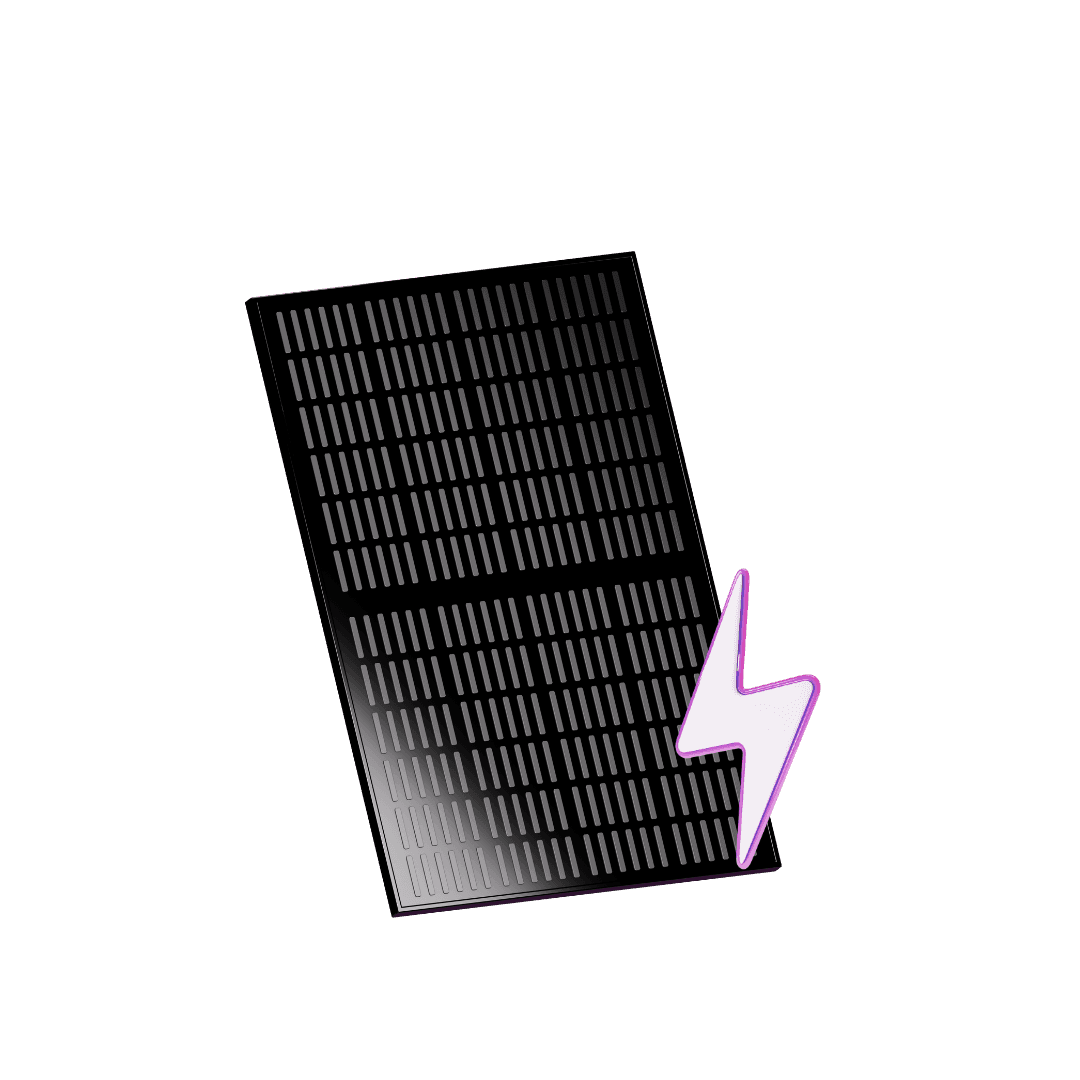
Solar Inverter
Solar panels output DC power, which needs to be converted to AC so it is compatible with your home. All solar systems come with an inverter that converts DC to AC, and because it is the working part of the system, it is the component most likely to break.
For this reason, 1KOMMA5° only offers the top handful of brands from companies like Enphase, Sungrow and SolarEdge.
It is common for cheaper inverters only to last a few years, whereas you can expect a good quality inverter to last 15 years or longer. Trying to cut costs on your inverter will often give you problems over the life of your system, and it isn’t always cheap to book a service job and then get an inverter replaced that is out of warranty.
Systems powered by Enphase allow for panel-level output that can significantly increase output, especially if you have patchy shade on your roof.
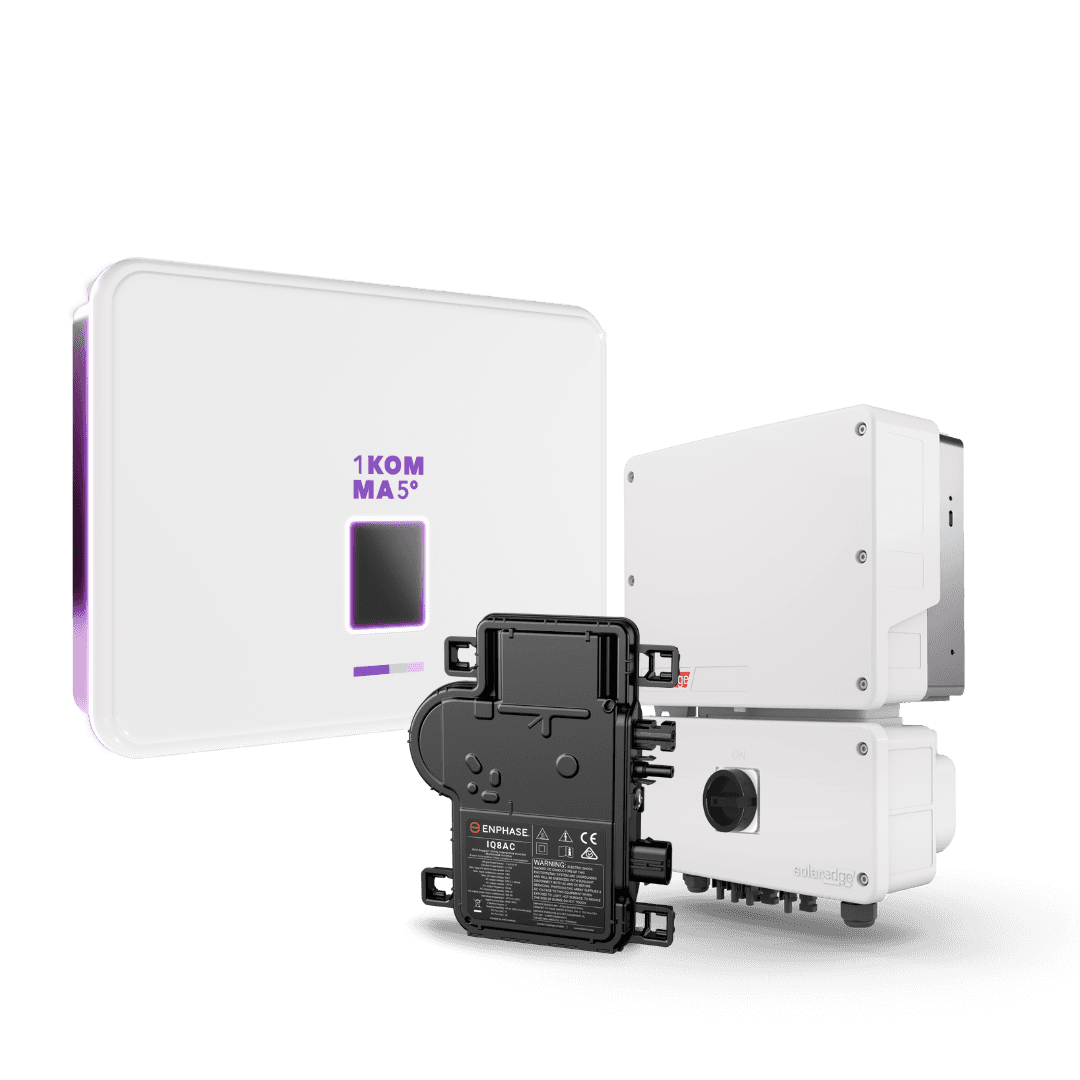
Solar System Monitoring
Monitoring typically comes with the inverter. However, there is now a range of advanced options for households that want more functionality and control. Brands like Enphase offer consumption monitoring that allows you to track how much power you use in your home and how much solar power you generate.
If you add solar battery storage, such as the Tesla Powerwall, the battery comes with advanced system monitoring and energy management. This additional functionality can turn your solar into a smart energy management system.
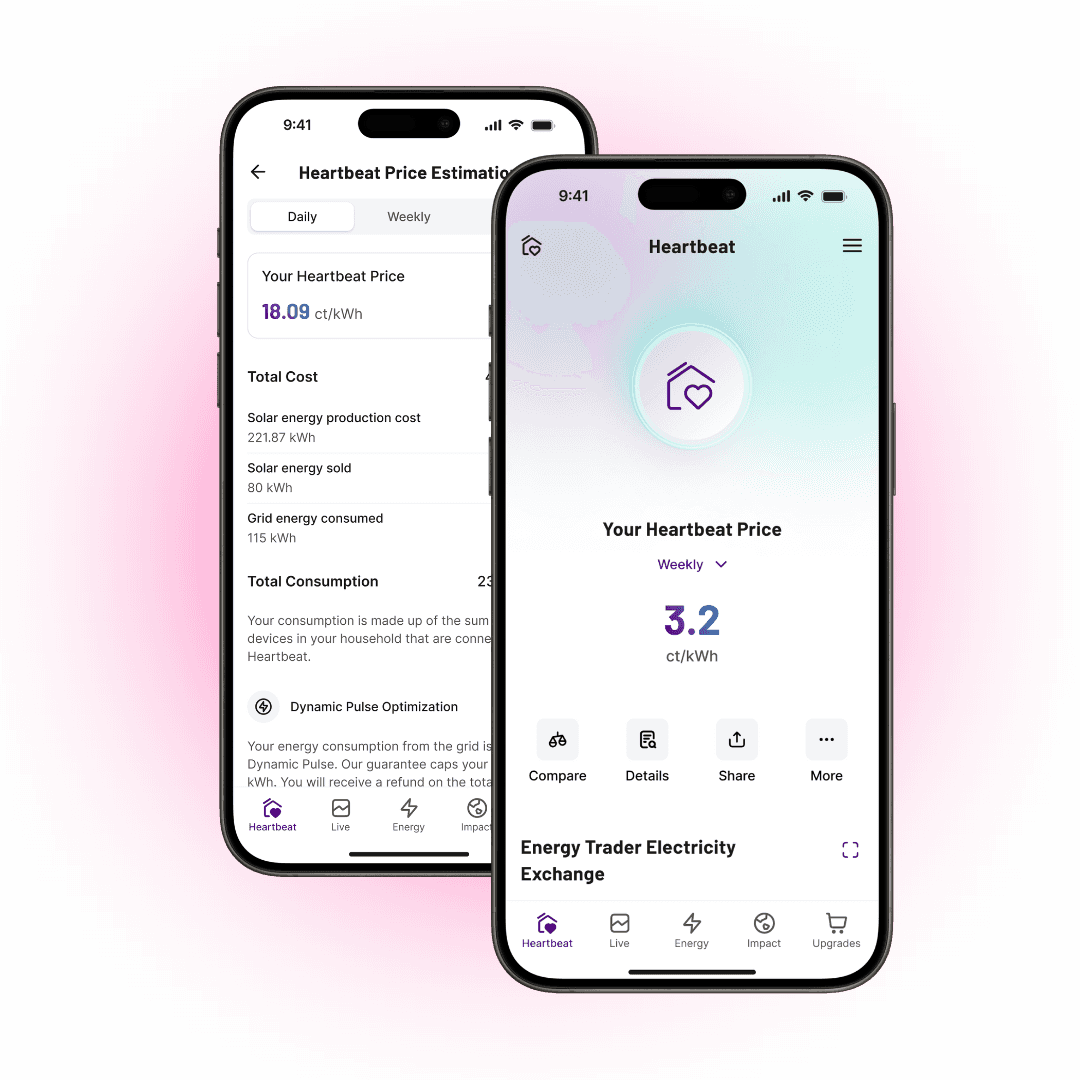
Solar Battery Storage
Solar battery storage is now becoming mainstream in Australia, and many of our customers are integrating storage into their solar power systems.
Solar battery storage starts at around $20,250 for a 13.5kWh system and costs more for larger systems with incredibly smart energy management. Solar battery storage allows your household to run on solar 24/7, and you can choose backup functionality for emergency power when the grid goes down. A solar battery can even recharge the following day when the sun comes up. The future of renewable energy has already arrived!
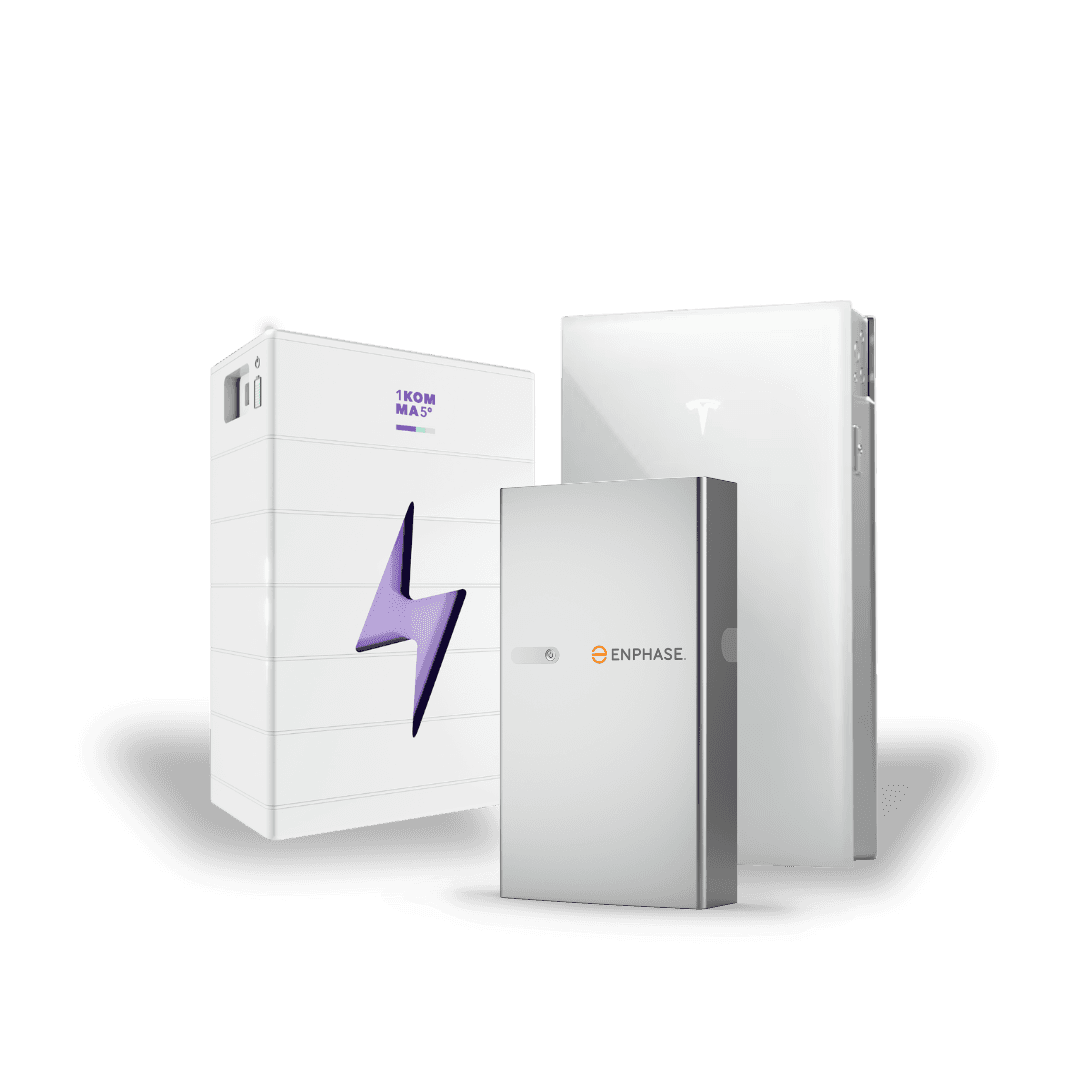
Installing a Smart Meter
The cost of installing a smart meter:
The cost of installation varies. The price you pay will vary depending on your location and grid network provider. Some energy retailers will offer free smart meter installations and upgrades while others charge an upfront fee or spread the cost over a period of time. The average cost of smart meter installation in 2020 was estimated to be around $226 by the Australian Energy Regulator.
Potential Contract & Pricing Changes:
When you install your new smart meter, it's important to be aware that you may incur additional charges or changes to your electricity plan and billing format. Some retailers may require you to shift to a ‘time of use’ rate, which essentially means the price you pay for grid power fluctuates based on peak and off-peak periods. Other retailers may allow you to stay on your existing flat rate plan if this is your preference.

Additional Costs of Installing Solar Panels

Split Panel Arrays
Solar power is typically generated across the day, with the output looking like a bell curve. By splitting your array across two roof sections, you can spread the output across the day and have two smaller peaks of output that can then be easier to manage. Installing two arrays of panels typically costs around $500 for the additional hardware, such as DC isolators and cabling, plus the additional labour cost. We recommend a split array for many of our customers.
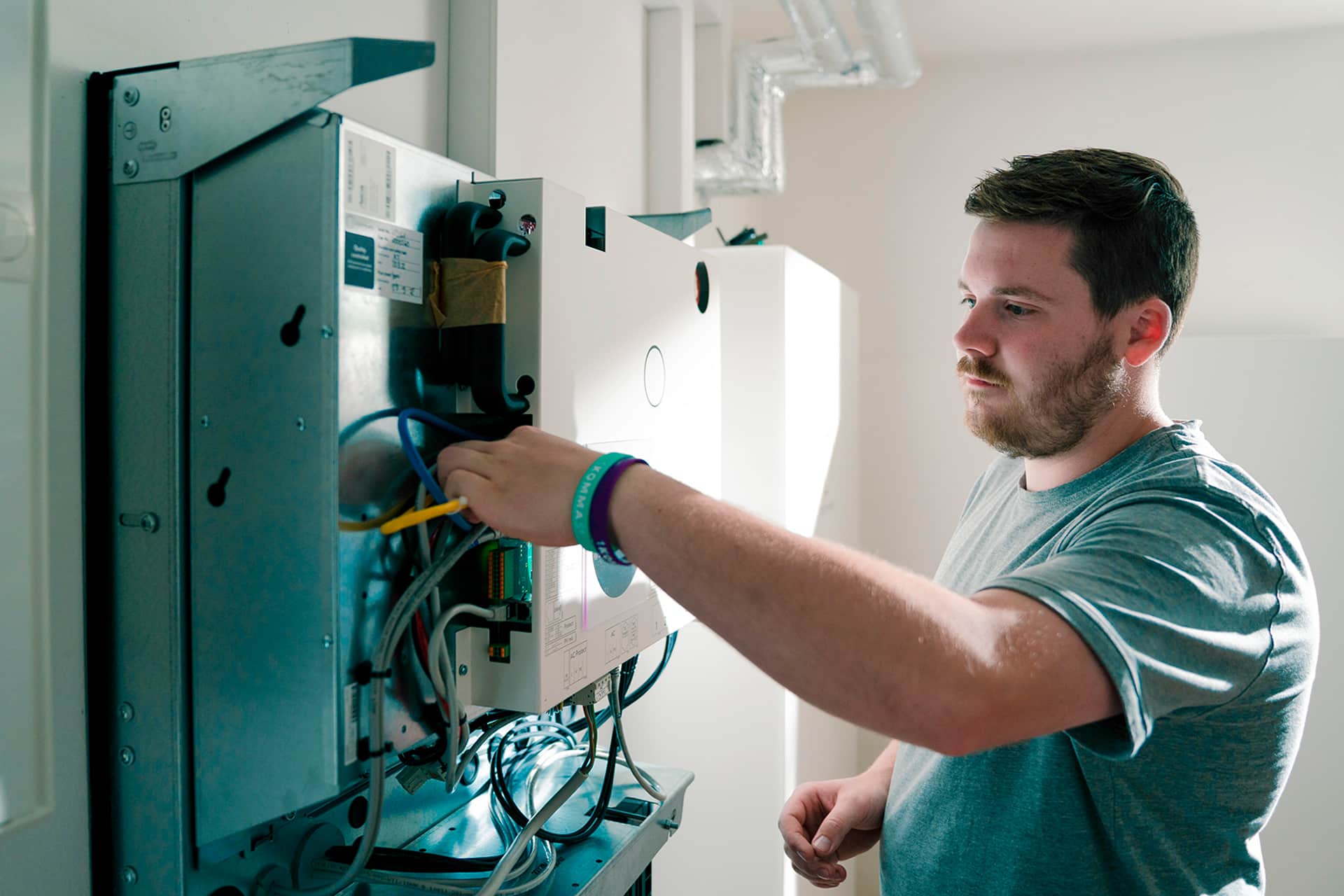
Meterboard Work
When you have solar installed, your meter board must be left up to current Australian standards. If you have an old meter board that needs upgrading, this must be done when installing solar power.
Typically, the work will cost less than $100 for things such as a new main switch or a new service fuse. If your meter board is too high ( such as on heritage-era buildings in the inner-west of Sydney), moving a meter board can cost around $2,000 or so depending on what needs to be done, and so it is often a show stopper unless you want the meter board upgraded as an aside from the new solar system. Please talk to us for more information if you think your meter board needs upgrading. We’d be happy to help with a quote if you send us a photo of your board.
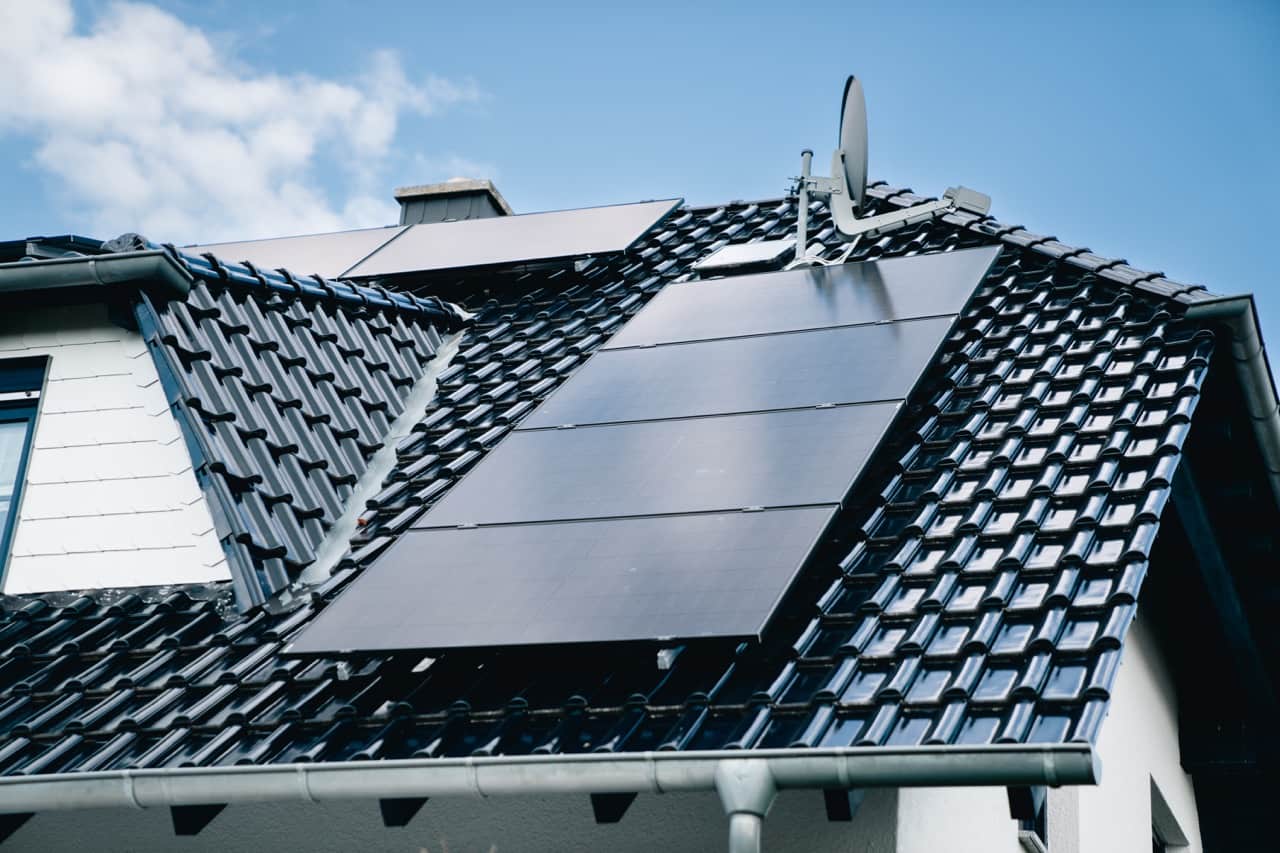
Access to a High Roof
Access to a high roof may require hiring a cherry picker. Most houses will be fine. However, from time to time, we need to install solar power on roofs that can’t be accessed with a ladder. Hiring a cherry picker isn’t cheap, but it’s not always a show-stopper. If you have a high roof or you are concerned we won’t be able to access your roof, please call the 1KOMMA5° Team on 1300 976 040 so that we can make an assessment for you.

Metering
When you install a solar power system, you need to replace your electricity meter with a bidirectional digital meter that measures how much power you are sending back to the grid. If you have a digital meter, your retailer will most likely need to replace it with a similar model but one that has a different program in it. Most energy retailers in NSW are now offering to change your meter free of charge.
Alternatively, we can arrange a no-cost meter change should you choose to switch to Energy Locals as your energy retailer. The Energy Locals plan includes a solar feed-in tariff of up to 10 cents (including GST), competitive electricity prices, carbon offsets for all your energy use, and no exit fees or lock-in contracts.
How Much Does it Cost to Have Your Solar Panels Cleaned?
The vast majority of panels on the market today are fitted with self-cleaning technologies, helping the rain to wash away as much as possible and keeping them cleaner for longer. That being said, your solar array will still need to be cleaned every so often to ensure maximum efficiency.
Dirty solar panels will experience a decrease in performance and efficiency. In some cases, this can lead to damage over time due to mismatched energy generation. You may notice your panels need cleaning through your energy management platform. Reduced production statistics and increased power bills are a good indicator. It's also a good idea to carry out cleaning after any heavy storms if you live in an area with pollution or you live in a coastal region (as salt can be corrosive to the panel components).
The cost of solar panel cleaning: It is strongly recommended and always safest (for both the solar system and yourself) to have this task performed by a professional. They will more than likely also carry out an inspection of the system, ensuring safety and prolonged performance.
Check for cracks, chips or corrosion
Carry out cleaning activities
Examine cabling for loose connections or natural wear and tear.
This service does come at a cost, though. On average, for panel cleaning alone (not including the inspection), you can expect to pay $30 per panel.

How Much Does Solar System Maintenance Cost?
Regular maintenance is essential for preserving the lifespan and ensuring continued performance. If you have a look around, too often you’ll see panel arrays that look like they’ve seen better days. It is somewhat commonplace for homeowners to install solar, love the benefits, but as the years pass, life gets busy, and they become accustomed to the solar array on their roof and solar savings on their bills. Regular maintenance and checks of the system may fall through the cracks. The beauty of solar producing electricity in the background is the same reason it can be so easily forgotten about, until, of course, there is a notable dip in production, which isn't ideal. Regular service checks on your system are vital:
Maximising efficiency and ROI: Cleaning away obstructions such as dirt, grime, and other debris helps maintain efficiency and maximise energy generation. The more energy your system can produce, the faster it will pay for itself, as well as help you to maintain consistent solar savings.
Prolonging system lifespan: Neglecting proper maintenance and servicing on your system will accelerate the rate of natural wear and tear. Over time, this can considerably shorten the system's lifespan and lead to costly repairs.
Preventing safety hazards: If there are any faulty connections or sections of wiring, along with any other damaged or malfunctioning components within the system, you may put your home at serious risk. Failure to prevent, detect or address these faults can lead to issues like electrical fires.
Protecting manufacturer warranties: Solar products and installations can be costly. Should anything ever go wrong with your system, you would likely be keen to have it repaired under warranty. Many manufacturers will require proof that regular maintenance work and system servicing have been carried out in order to honour the terms of the warranty.
What to Expect During Routine Solar Maintenance
Your chosen solar retailer will carry out a number of duties as part of your solar servicing. These ranged from superficial tasks such as panel cleaning to electrical checks and design alterations. Here's a list of maintenance activities you should be aware of when buying solar. Some of these you can perform easily yourself, whilst others will require professional assistance.

No Cost Solar Systems
What is Zero Cost Solar?
When people first hear the phrase, “no cost solar” their immediate thought seems to be - too good to be true. This is a fair assumption considering solar is otherwise such a considerable investment. When you enter a no cost solar agreement you can expect your solar retailer to install and maintain the system without an upfront payment from you.

Obligations & Responsibilities of the Residence
Rents/buys the clean solar energy from the solar retailer
OR
Rents the solar equipment installed on the home

Obligations & Responsibilities of the Retailer
Install the solar system
Perform all maintenance on the solar system
Retains ownership of the solar system
Essentially, in most cases your solar company will still own the system while you pay them to use the energy it produces. This is similar to the agreement you hold with your existing grid based energy retailer, the main differences between the two include firstly, the rates you pay for your power, with a no cost solar system these are considerably lessened and secondly, the electricity which you will use to power your home is completely renewable and clean.
What's Included in a No Cost Solar Installation:
Simply put everything involved in the set-up, design and installation of your solar system is included under this agreement. Here’s a more detailed list of some of the components:
Hardware: this includes all the physical components required for the solar installation. This could include not only the panels, inverter, battery etc. but also refers to the less prominent components such as your mounting racks or necessary wiring.
Installation Process: Your solar retailer is also responsible for designing the system layout and types of products used in order to help you make the most of solar with a high efficiency system. They will then also be responsible for the installation of the system.
Ongoing Maintenance & Repairs: Your chosen solar company will also take care of continued or regular maintenance and repairs of the system over the course of the contract.
After Sales Support: The vast majority of retailers/manufacturers will offer 24/7 system monitoring platforms to help you to keep an eye on the system’s health and performance. Should you notice anything wrong with your system there will be a number you can contact for comprehensive support and assistance.

The Two Main Types of No Cost Solar Installations:

1. Solar Lease
When you enter a solar lease agreement you are essentially leasing all the necessary equipment from your solar retailer for a fixed monthly fee, lasting the duration of the contract.

2. Power Purchase Agreement (PPA)
This is the more widely recognised system for engaging in a no cost solar agreement. This method is closer to the way you use and pay for your grid power. You essentially ‘lease’ or pay to use the power the solar system produces in your home.
The return on Investment of Your Solar System
The Payback Period of Solar Power
The payback period for solar power is at an all-time low, mainly due to better quality products, greater accessibility, more efficient manufacturing processes and an increase in government incentives. The average time it takes for a solar system to pay itself off in Sydney is around 3-5 years, meaning all energy generated after that time is free, and all solar savings go straight into your pocket. A 5kW solar system, throughout its life, can, on average, save you up to $50,000. Although this is a good indication, there are a number of factors that influence how quickly you can see a return on your investment.

Factors Influencing the Solar Payback Period
The size of your solar system: The size of your solar system can have both a positive and negative impact on your ROI. A larger system will require a greater upfront investment. But at the same time, a larger system will generate more power and, as such, more savings on average.
Your household energy consumption: The amount of energy you use on average will also determine how greatly you will benefit from installing solar. Higher energy consumption indicates a greater need for solar and, as such, greater savings. A household with high energy consumption will be able to offset more grid power costs, leading to a faster payback period.
Local government incentives: Government incentives, such as Small-Scale Technology Certificates (STCs) help to reduce the initial price of solar power. Whereas other programs, such as the grid export Feed-In Tariff, will provide you with credits that help offset the cost over time.
Locational Factors: Your individual property will also play a part in determining your ROI. Any shading or other obstructions will reduce the system's overall output.
Your network provider: The area in which you live and your local energy retailer will determine the amount of savings you’ll receive with solar. If you live in an area with higher electricity prices, you will, in turn, receive greater savings, resulting in a faster payback period.
Paying for Your Solar System
Good quality solar systems come with a considerable upfront cost, leaving homeowners out of pocket. This makes many prospective solar homeowners hesitant to take the leap. Luckily, there are other finance and payment avenues available that help make solar a more achievable goal.
Solar Payment Plans

The main type of payment plan available aimed at homeowners looking to install solar is an interest-free payment plan. These agreements allow homeowners to finance their solar installation without any interest. Essentially, by entering into a solar interest-free payment plan, you can access a lump sum of money upfront, much like a personal loan. You are then required to make regular payments over an agreed-upon period. An interest-free payment plan helps to take the financial stress out of paying for your solar as the cost is spread over a longer period, making repayments more manageable. The main benefit of having no interest is increased certainty for the homeowner as it is clear how much and for how long you will have to pay.
What’s the Catch? Of course, there is a catch: the solar retailer from which you purchase your system is charged a considerable fee should you choose to take this avenue. This additional cost is then passed onto the customer as a price increase of around 20% of the original purchase price.
Financing Your Solar System - Solar Green Loans

A solar green loan is a type of personal loan designed specifically with solar homes in mind. These loans typically come with a reduced interest rate compared with other personal loans. Additionally, these loans are usually also repaid over a longer period in order to make them more manageable for homeowners. The benefit of solar financing is your ability to access a lump sum of money immediately with lower interest rates and longer loan terms.
So... What Does Solar Really Cost?

The Cost of Solar Power Nationally
To get a better understanding of the cost of solar across Australia we'll take a look at a 10kW solar system:
The price of a 10kW solar system: Starting from $12,000
The price of a 10kW battery storage system: Starting from $15,000

The Cost of Solar Power in Sydney
For the most part cities like Sydney and Melbourne have similar installation and solar power purchase prices, but they're not exactly the same. There are a couple of clear differences:
The cost of larger solar systems tends to be increased in Sydney (when compared with Melbourne)
Sydney has a lesser number of government rebates, making solar slightly more expensive

The Cost of Solar Power in Melbourne
While, generally speaking, the cost of solar in Melbourne is much the same as the cost of solar in Sydney, it is on average slightly lower. This is for a couple of key reasons:
Melbourne (and Victoria as a whole) have more government rebates and incentives than those in NSW, driving down the prices.
The actual cost of installation in Melbourne is lower than in Sydney.
The 1KOMMA5° Difference...
We believe it's time for NEW ENERGY, helping you to gain independence and live free from Bill Shock, Blackouts & Fossil Fuels.

More Helpful Articles:

1KOMMA5° Blog
Need more information?
Head over to the 1KOMMA5° blog for more helpful tips and other important guides on everything solar, from inverters, panels and batteries to how to make the most of your investment for years to come.